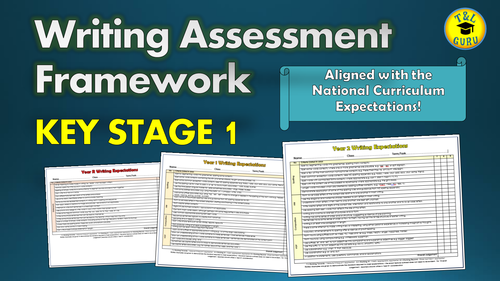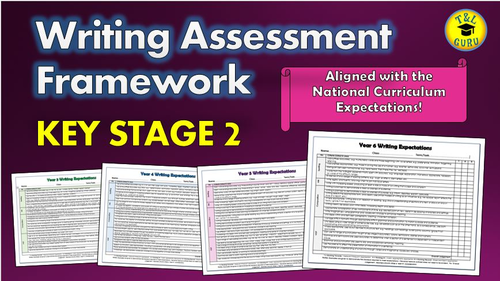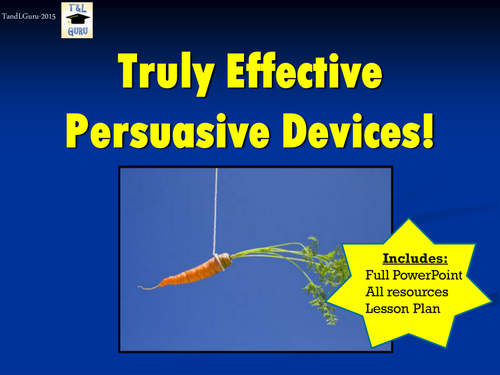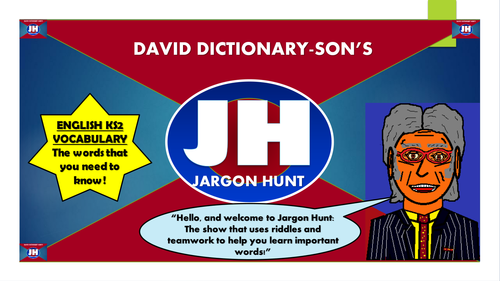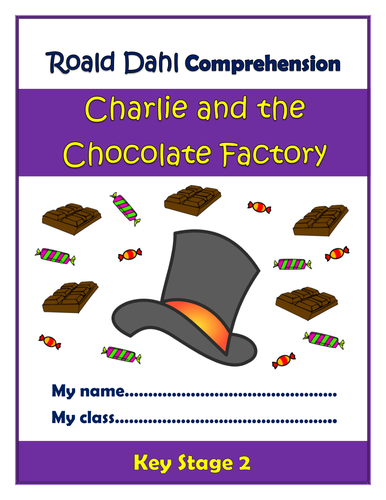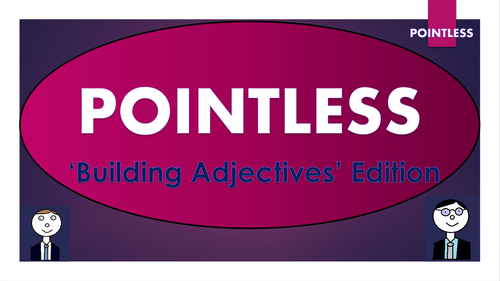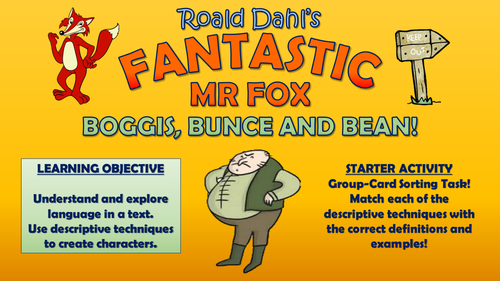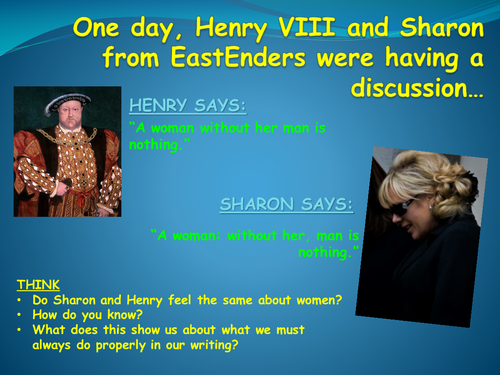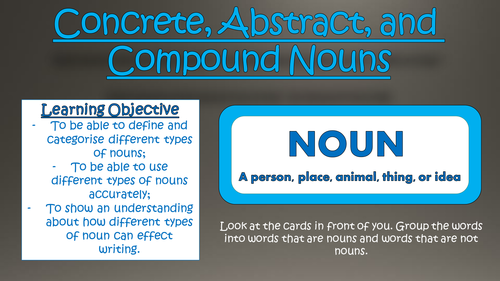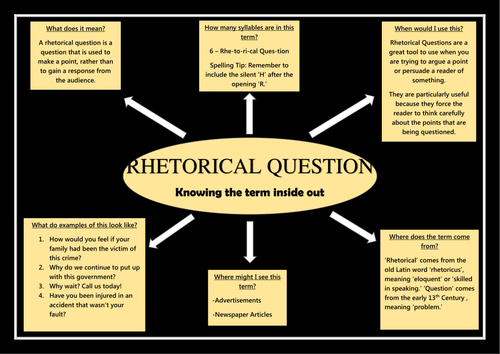
3k+Uploads
1913k+Views
2244k+Downloads
Literacy for early years

Writing Assessment Framework - KS1 - Aligned with the National Curriculum Expectations!
This writing assessment framework has been designed to allow to teachers to accurately assess student attainment against the writing expectations within the new National Curriculum. They are perfect for use when gauging the standard of extended writing pieces. These are to be used when assessing writing for Years R-2, progressing towards the end of Key Stage 1 expectations.
The expectations for each year group are split into four subcategories: Spelling, Handwriting, Composition, and VGP (Vocabulary, Grammar, and Punctuation). Within each subcategory are statements relating to the expectations for the year group. Teachers simply mark the extent to which the statement has been achieved (utilising the key at the bottom of the page) and then use best fit to determine the overall standard of the writing.
In addition to the Word documents (allowing you to edit if you need to) I've also added the documents as a PDF, in case the formatting differs on your computer.

Writing Assessment Framework - KS2 - Aligned with the National Curriculum Expectations!
This writing assessment framework has been designed to allow to teachers to accurately assess student attainment against the writing expectations of the new National Curriculum. They are perfect for use when gauging the standard of extended writing pieces. These are to be used when assessing writing for Years 3-6, progressing towards the end of Key Stage 2 expectations.
The expectations for each year group are split into four subcategories: Spelling, Handwriting, Composition, and VGP (Vocabulary, Grammar, and Punctuation). Within each subcategory are statements relating to the expectations for the year group. Teachers simply mark the extent to which the statement has been achieved (utilising the key at the bottom of the page) and then use best fit to determine the overall standard of the writing.
In addition to the Word documents (allowing you to edit if you need to) I've also added the documents as a PDF, in case the formatting differs on your computer.

George's Marvellous Medicine - Assorted Resources! (Worksheets, PowerPoints, Assessments etc.)
This pack contains a vast number (I think there's about 20 resources here) of activities, resources, and ideas for the teaching of Roald Dahl's 'George's Marvellous Medicine.' They should provide an excellent starting point for anybody who wants to teach the book and is looking for some inspiration for individual lesson content/ tasks. The vast majority of these tasks can be adapted for differing age groups/ ability ranges/ needs.
The pack contains resources that focus on the key themes in the book, such as family and emotions. There are also resources that enable to build individual reading skills, such as inferring and deducing, pulling out quotations, and analysing language. In writing, students learn to think imaginatively and create texts appropriate to audience and purpose.
All images are licensed for commercial use, and are cited on the final slides of the PowerPoints.

Truly Effective Persuasive Devices!
This visual and highly engaging set of resources is designed to enable students to use imaginative and original persuasive devices in their own writing. Through following the interesting learning journey, students are given the opportunity to:
- Define each persuasive device;
- Identify these in existing persuasive texts;
- Analyse their effect in a longer persuasive text;
- Create their own persuasive device-filled piece, using a jointly-created success criteria based upon their analysis task;
- Peer assess each other's persuasive writing attempts.
All resources are provided, including:
- Visual PowerPoint presentation;
- Definitions cards (they just need printing and cutting out)
- Analysis worksheet;
- Lesson outline for teachers and learning support to follow.
Note: All pictures licensed for creative use - authors and sources labelled on the final slide of the presentation.

Jargon Hunt - KS2 English - Building Literacy through Riddles and Teamwork!
Welcome to Jargon Hunt! This engaging and exciting activity is perfect for building students' literacy skills; helping them to understand key vocabulary through cryptic rhyming riddles and teamwork.
Once the game is introduced and the rules are shared (on the presentation) students are given a riddle card and an answer card. The only catch is that their answer card does not match their riddle! Through reading their riddle to others, and allowing others to read their riddles to them, students learn the English vocabulary as prescribed for teaching at KS2 in the new National Curriculum.
Provided in this pack are:
- 30+ slide presentation, hosted by David Dictionary-son, who walks students through the game in a step-by-step fashion.
-Class-size pack of riddle cards and answer cards. They simply need to printed on card, or printed on paper and laminated.
This resource is a valuable tool for helping students to comprehend the words that they will need to understand in the New Curriculum, build valuable speaking and listening skills, and also have lots of fun!
This resource can be bought alone. or as a part of a Jargon Hunt KS2 bundle (English, Maths, and Science) for just £1 more!

Fantastic Mr Fox - Structure of the Story!
This fun and informative lesson helps students to understand the narrative structure used by Roald Dahl throughout ‘Fantastic Mr Fox.’ In particular, students identify the features of each stage of the narrative structure within the story, before recreating sections of the structure themselves!
The lesson follows a step-by-step learning journey, in which children learn through:
- Taking part in a fun group quiz to recap on the key elements of the plot leading up to the ending;
- Reading and understanding extracts from the ending of Fantastic Mr Fox, answering comprehension questions to demonstrate their understanding;
-Understanding features of narrative structure and applying the plot of Fantastic Mr Fox to the individual elements;
-Recreating elements of the plot, using their understanding of the stages of narrative structure;
- Self assessing their own learning attempts.
Included is:
- Whole lesson PowerPoint - colourful and comprehensive;
- Storyboard Template (and PDF version);
- Selected extracts - Fantastic Mr Fox;
- Recreations Template (and PDF version);
- Comprehensive lesson plan.
There are also opportunities for group learning, speaking and listening, peer assessment, and whole class discussion. I originally used these resources with a mixed-ability year 3 class, however colleagues have used them for between years 1 and 8 with some adaptations.
All images are licensed for commercial use, and image rights are listed on the last page of the presentation.

Charlie and the Chocolate Factory - Roald Dahl - KS2 Comprehension Activities Booklet!
This resource booklet contains a wide range of age-appropriate, engaging, and meaningful comprehension activities for use throughout the reading of Roald Dahl's 'Charlie and the Chocolate Factory.' Teachers have found them particularly useful in comprehension or guided reading sessions. They are perfect for aiding the progress of children towards meeting the KS2 expectations within the new National Curriculum framework. Children love learning from these resources, whilst they are also of great use to teachers, as there is explicit information within each task regarding which comprehension strands the task is designed to demonstrate. They also relate to key extracts, characters, and themes from the story, ensuring that children gain a deep understanding of the text.
Activities within the booklet include:
- 'An Interview with Charlie Bucket' - to enable students to demonstrate that they can: 'Understand what is read by drawing on information from more than one paragraph, identifying key details that support the main ideas, and using quotations for illustration;'
- 'Dahl's Description' - to enable students to demonstrate that they can: 'Explain meanings of words that they know and ask the meaning of new words. Link the meaning of new words to words that they already know;'
- 'Willy Wonka' - to enable students to demonstrate that they can: 'Understand what is read by drawing on information from more than one paragraph, identifying key details that support the main ideas, and using quotations for illustration;'
- 'Figurative Language' - to enable students to demonstrate that they can: 'Discuss and evaluate how authors use language, including figurative language, to create an impact on the reader.'
Plus many, many more activities (the booklet is around 20 pages in length!) I've also added it as a PDF in case the formatting differs on your computer.
All images are licensed for commercial use, and are cited on a separate document (included).

Descriptive Devices - Knowing the Words Inside Out! (Helpsheets, Posters and Worksheet Templates)
These colourful, engaging and informative posters/ help-sheets are perfect to help your students gain a broad and deep understanding of each of the key descriptive devices, thus vastly improving their textual analysis and enhancing their creative writing attempts.
Each sheet displays the key word in the middle, and then answers some of the key questions surrounding the words, including:
- What does it mean?
- How many syllables does it have?
- What are examples of it?
- How do I spell it?
- When would I use this?
- What type of word is it?
- Where does the word come from?
There are sheets for: Similes, Metaphors, Hyperbole, Adjectives, Adverbs, Alliteration, Onomatopoeia, Verbs, Personification, and Verbs. These can be used as help-sheets as students write (my students love this) or blown up to A3 to use as classroom posters.
I have also provided blank templates for each word, so that students can fill in the everything that they know about the words themselves, which makes for an excellent starter, plenary, or recap activity.

Pointless - Building Adjectives Edition
Based on the popular game show 'Pointless', this resource is perfect for use as a starter activity, plenary, or revision tool. Editable, so that you can change to any other topic or change the questions/answers. Containing almost 30 slides of sound clips, engaging visuals, and suitably challenging questions, this resource is effective at both promoting engagement and enhancing learning.
There are several full rounds of questions to build students' understanding of adjectives, including:
1. Finding synonyms of dull adjectives
2. Defining adjectives
3. Unscrambling anagrams of adjectives
4. Finding the most complex and interesting adjectives.
The nature of the game ensures that this resource can challenge students of all levels.
NOTE: You can buy this resource alone, or in a bundle of 8 Pointless games, for only £1 more!

George's Marvellous Medicine - Roald Dahl - KS1 Comprehension Activities Booklet!
This resource booklet contains a wide range of age-appropriate, engaging, and meaningful comprehension activities for use throughout the reading of Roald Dahl's 'George's Marvellous Medicine.' Teachers have found them particularly useful in comprehension or guided reading sessions. They are perfect for aiding the progress of children towards meeting the KS1 expectations within the new National Curriculum framework. Children love learning from these resources, whilst they are also of great use to teachers, as there is explicit information within each task regarding which comprehension strands the task is designed to demonstrate. They also relate to key extracts, characters, and themes from the story, ensuring that children gain a deep understanding of the text.
Activities within the booklet include:
- 'Feed Grandma' - to enable students to demonstrate that they can: 'talk about their favourite words and phrases in the story;'
- 'Dahl's Description' - to enable students to demonstrate that they can: 'Explain meanings of words that they know and ask the meaning of new words. Link the meaning of new words to words that they already know;'
- 'George's Idea' - to enable students to demonstrate that they can: 'Say what might happen next in a story based on what has happened so far;'
- 'Grandma' - to enable students to demonstrate that they can: 'Enjoy reading and discussing the order of events in books and how items of information are related.'
Plus many, many more activities (the booklet is around 20 pages in length!) I've also added it as a PDF in case the formatting differs on your computer.
All images are licensed for commercial use, and are cited on a separate document (included).
Bundle Sale

Macbeth: Lesson Bundle! (All Lessons, Plans, Resources, Everything!)
This engaging, varied, and informative scheme of learning is designed to help students gain understanding, assessment skills, and key interpretations of William Shakespeare's tragedy 'Macbeth.' Made up of a wide-range of interesting and exciting lessons, students should complete this scheme having gathered vital skills in: interpreting the significant meanings of the text, understanding the writer's ideas within the text, identifying the traits of key characters, settings, and themes, understanding dramatic and language devices, and relating the text to its social and historical context.
Stimulating, visual, and easily adaptable, these lessons provide suggested learning objectives and outcomes for students of a wide-range of abilities - The vast majority of tasks are differentiated to allow for different abilities and needs in your classroom. Each lesson loosely follows this logical learning journey to ensure that students learn in bite-size steps:
- Engaging
- Defining/ Understanding
- Identifying/Remembering
- Analysing/ Creating
- Peer or self evaluating.
All of the lessons are interactive, employ a variety of different teaching and learning methods and styles, and are visually-engaging. Resources, worksheets, and lesson plans are all provided, in addition to a fun Pointless game!
Bundle Sale

Popular Fiction KS2 Comprehension Activity Booklets Big Bundle!
This bundle contains 7 fantastic comprehension activity booklets - each is over 20 pages in length, and focuses upon a different popular classic text.
The resource booklets contain a wide range of age-appropriate, engaging, and meaningful activities - perfect for use throughout class reading of texts or equally in guided reading sessions. They are perfect for aiding the progress of children towards meeting the KS2 comprehension expectations within the National Curriculum framework. Children love learning from these resources, whilst they are also of great use to teachers, as there is explicit information within each task regarding which comprehension strands the task is designed to demonstrate.
There are booklets included for the following texts:
- The Hobbit - J.R.R Tolkien
- A Series of Unfortunate Events -The Bad Beginning - Lemony Snicket
- Billionaire Boy - David Walliams
- Charlotte’s Web - E.B White
- Holes - Louis Sachar
- Skellig - David Almond
- The Lion, The Witch, and The Wardrobe - C.S Lewis
There are a huge range of activities! A PDF of each booklet is also provided, to prevent formatting issues.
Bundle Sale

Holes Lesson Bundle!
These engaging, varied, and informative lessons have been designed to help students gain a valuable understanding of the plot, characters, language, and key messages in Louis Sachar’s novel ‘Holes.’ The lessons enable students to gain a comprehensive understanding of the key features of content, language, and structure, in addition to considering Sachar’s key messages throughout the novel.
All of the resources that you need to teach are included in the bundle: Whole lesson step-by-step PowerPoint presentations, informative and engaging , worksheets, activities, and lesson plans.
Contained in the bundle are lessons based on:
- 1. Stanley Yelnats;
- 2. The Warden;
- 3. Kissin’ Kate Barlow and Sam;
- 4. The Importance of the Past.
Stimulating, visual, and easily adaptable, these lessons provide suggested learning objectives and outcomes for students of a wide-range of abilities - The vast majority of tasks are differentiated to allow for different abilities and needs in your classroom. Each lesson loosely follows this logical learning journey to ensure that students learn in bite-size steps:
- Engaging
- Defining/ Understanding
- Identifying/Remembering
- Analysing/ Creating
- Peer or self evaluating.
All of the lessons are interactive, employ a variety of different teaching and learning methods and styles, and are visually-engaging.
Bundle Sale

SPAG: Nouns Lesson Bundle!
These engaging and detailed resources have been designed to make the learning of different types and uses of nouns (particularly prominent in the new curriculum) easily accessible, engaging and interesting for all children. Throughout each lesson, students learn to improve their skill at using appropriate, concise, and precise nouns, and practice employing them within their own writing compositions. Each lesson contains a comprehensive whole lesson PowerPoint, all the resources that you will need, and a lesson plan.
Within this pack is included:
- Exceptional Expanded Noun Phrases;
- Collective and Plural Nouns;
- Concrete, Abstract, and Compound Nouns
All images are licensed for commercial use, and are cited on the final slide of the PowerPoint/ the bottom of worksheets.

Fantastic Mr Fox - Boggis, Bunce and Bean!
This fun and informative lesson helps students to understand the descriptive language techniques used by Roald Dahl in his descriptions of Boggis, Bunce, and Bean in ‘Fantastic Mr Fox.’ In particular, students analyse how Dahl's language is used to create imagery, before designing and describing their very own mean farmers!
The lesson follows a step-by-step learning journey, in which children learn through:
-Completing a card-sorting activity to define and exemplify each of the descriptive devices;
- Reading and understanding extracts from the opening of Fantastic Mr Fox, in which the farmers are described;
- Identifying and analysing Dahl's use of language devices throughout the description of the farmers;
- Writing their own language device-filled descriptions of their farmers, with support from a clear template;
- Self assessing their own learning attempts.
Included is:
- Whole lesson PowerPoint - colourful and comprehensive;
- Language Analysis Worksheet (and answer sheet);
- Selected extracts - Fantastic Mr Fox;
- Cards for Sorting Activity;
- Planning Template (Word and PDF);
- Comprehensive lesson plan.
There are also opportunities for group learning, speaking and listening, peer assessment, and whole class discussion. I originally used these resources with a mixed-ability year 3 class, however colleagues have used them for between years 1 and 8 with some adaptations.
All images are licensed for commercial use, and image rights are listed on the last page of the presentation.

Story Genres - Double Lesson!
This stimulating and informative double lesson aims to improve students’ ability to understand the features of various story genres, and analyse the conventional language features within them. In particular students focus upon the vocabulary, sentence, and descriptive device choices made by writers across each of the genres, and begin to comprehend the effect of these techniques upon the reader.
Students follow a clear and logical learning journey, in which they:
-Define the different story genres and understand their key content features;
-Understand the key features of different genres through interesting movie clips ;
-Work collaboratively using the jigsaw method to ascertain the language features (vocabulary, sentences, descriptive devices) of different genres;
-Engage with a number of interesting story extracts (Louis Sachar - Holes, JK Rowling - Harry Potter and the Chamber of Secrets, Darren Shan - The Vampire's Assistant, Jeff Kinney - Diary of a Wimpy Kid.)
-Write an analytical piece on some of the language features used by the writer of their chosen genre;
-Peer/self-assess their analytical attempts.
There are enough resources here really for two lessons, including:
-Visually engaging whole-lesson PowerPoint;
-Story extracts x 4 (Harry Potter, Holes, etc.)
-Learning Objective cut out;
-Analytical Paragraphs Template;
-Jigsaw method worksheet
-Step-by-step lesson plan.
All images are licensed for commercial use, and are cited on the final page of the slide.

Capturing the Readers' Attention!
This highly engaging and informative lesson helps students to use appropriate, sophisticated, and original techniques in creating writing that can hold their readers' attention.
Students learn:
- How to use their five senses in writing;
- How to relate the senses to the descriptive devices;
- How to create a 'hook' in their writing;
- How to create mystery in their writing;
- How to analyse and evaluate existing examples of descriptive writing;
Included are all worksheets, and detailed and visual PowerPoint presentation, which explains each concept clearly, cards for the interactive 'senses' game, and a lesson plan for teacher guidance.
Alternatively, you can buy the Descriptive Writing Big Bundle (All descriptive devices lessons, structuring and organising writing lesson, capturing the readers attention lesson, and the literacy writing mat) for £6
All images are licensed for commercial use, and authors are cited on the final slide.

VCOP - Punctuation
Perfect for English lessons, or as part of a literacy across the curriculum scheme, the VCOP lessons aim to build students' fundamental writing skills.
Engaging, differentiated, and easily adaptable, this lesson aims to improve students' skills at using varied and appropriate punctuation, following a logical learning journey to ensure that students learn in bite-size steps:
- Defining punctuation marks;
- Identifying varied vocabulary in humorous writing examples;
- Analysing varied vocabulary in an interesting descriptive passage;
- Creating their descriptive piece, using varied vocabulary;
- Peer or self evaluating their varied vocabulary attempts.
Resources, worksheets, and a lesson plan are provided.
This resource can either be bought alone, or as part of a VCOP bundle (see resource VCOP - All lessons & scheme - vocabulary, connectives, openers, punctuation) for just £1 more.

Concrete, Abstract, and Compound Nouns!
This interesting and engaging lesson enables students to be able to define and categorise different types of nouns, to be able to use different types of nouns accurately, and to show an understanding about how different types of noun can affect writing. This knowledge is of particular importance when working through the new National Curriculum.
The lesson follows a clear, logical, bite-size learning journey, which guides students towards differentiated learning objectives. Over the course of this journey, they become able to:
- Define what concrete, abstract, and compound nouns are;
- Identify and categorise different concrete, abstract, and compound nouns;
- Write accurately using a range of concrete, abstract, and compound nouns, to increase the depth and variety of their writing;
- Peer assess each other's learning attempts.
This resource pack includes:
- A visually engaging whole-lesson PowerPoint presentation;
- Word cards for sorting;
- Venn diagram mat for card-sorting activity
- Clear and interesting worksheets to record student responses;
- A detailed lesson plan, complete with what the teacher and students should aim to achieve at each stage of the lesson.
All images are licensed for commercial use, and are cited on the final slide of the PowerPoint/ the bottom of worksheets.

Persuasive Devices - Knowing the Words Inside Out! (Helpsheets, Poster, and Worksheet Templates)
These colourful, engaging and informative posters/ help-sheets are perfect to help your students gain a broad and deep understanding of each of the key persuasive devices, thus vastly improving their textual analysis and enhancing their persuasive/argumentative writing attempts.
Each sheet displays the key word in the middle, and then answers some of the key questions surrounding the words, including:
- What does it mean?
- How many syllables does it have?
- What are examples of it?
- How do I spell it?
- When would I use this?
- What type of word is it?
- Where does the word come from?
There are sheets for: Statistics, Personal Pronouns, Anecdotes, Rhetorical Questions, Repetition, Colloquial Language, Connectives, List of Three, Imperatives, Emotive Language. These can be used as help-sheets as students write (my students love this) or blown up to A3 to use as classroom posters.
I have also provided blank templates for each word, so that students can fill in the everything that they know about the words themselves, which makes for an excellent starter, plenary, or recap activity.

